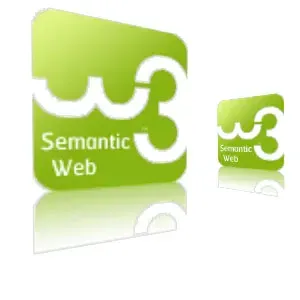Tags and the semantic web
Written by

MsBehaviour looks at why tagging data is important as the next phase in the development of the Semantic Web and provides some tips for tagging your content on The Big Idea.
* * *
I became obsessed with tagging when I lived in the UK, though I have never sprayed my name onto an urban landscape. I was an online editor adding keywords to content, with new taxonomies and member generated folksonomies. Now tag clouds can be found all over the web, and are not just useful for visitors navigating your site. Search engines rely on tags to define and weight the content of pages. One of the most important parts of digital publishing is using the right keywords and tags, as if you don't keyword your content then you probably won't appear on the first page of search results.
The tagging trend kicked off around 2003 with De.licio.us, a social bookmarking service and the image hosting site Flickr. Now every online service uses tags, and Twitter has developed a rash of #hashtags to group conversations. Tagging of content has led to Real Simple Syndication or RSS feeds to change how people stay up to date with online content. I use Feedly as an RSS Feed Reader which interfaces with Firefox and Google Reader to subscribe to RSS feeds of content I am interested in. This creates a constantly updated, personalised magazine that I can customise at any time according to my information needs.
If you are posting content to The Big Idea then think hard about the right keywords to use and see if a tag has already been used. It's better to add more content to a tag that has already been created than using a new one that is very similar. The idea is to use the right tags to have your content positioned next to similar content. This is how many people find clips on You Tube, they find something they like then look for similar clips to watch. The Big Idea has RSS feeds for the main channels as well as a comprehensive list of Tag Categories such as Creative Disciplines, Regions and Iwi. Then there are the key words that have been used as tags by members of the Big Idea community as they publish their content on the site.
You are trying to make it easy for search engines and sites to accurately index your content. Instead of using generic terms such as 'photo, colour, paint', think of keywords people might use in a search engine like the name of the artist or gallery. Answering who, what, when, and where in your tags is a start, and keep it simple without using too many tags. A good example to look at is the Lifeline for film festival article about the NZ International Film Festival in Christchurch.
The Tags used in the story are:
- Arts Management
- Moving Image: Film
- Canterbury Region: Christchurch
- Canterbury Community Trust
- Christchurch Film Fesitval
- New Zealand International Film Festival
You can see at a glance what the story is about and future stories with the same tags will stay connected to this one adding context. Understanding the New Web Era: Web 3.0, Linked Data, Semantic Web covers what is coming after Web 2.0, which some people unimaginatively are calling Web 3.0. I prefer to call the next phase The Semantic Web, as it sounds far more important than a mere number - which it is. Semantics is the study of meaning and this next web development stage is about a deeper level of engagement with sum of human knowledge online.
As Wikipedia states, "The Semantic Web is an evolving extension of the World Wide Web in which the semantics of information and services on the web is defined, making it possible for the web to understand and satisfy the requests of people and machines to use the web content. It derives from World Wide Web Consortium director Sir Tim Berners-Lee's vision of the Web as a universal medium for data, information, and knowledge exchange."
W3Schools has an excellent tutorial about the semantic web, which ultimately is about using humans to help computers make connections and relationships more easily. I like to joke that the web will eventually end up knowing what you need to know, before you're even aware you need to know it. Until then adding the right tags is a step in the right direction.